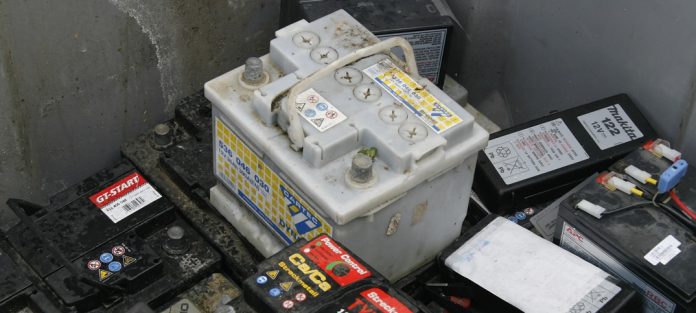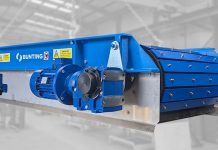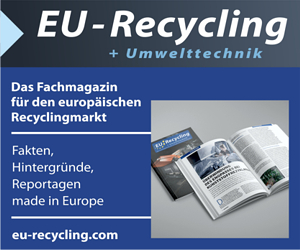Proposal for Batteries Regulation 2020/353 (COD), repealing Directive 2006/66/EC and amending Regulation (EU) No 2019/1020
The recycling industry welcomes the draft of a new battery regulation, it contains in large parts important aspects and objectives that include the interests of green circular economy and recycling industry. It considers important problematic aspects of daily end of life management of batteries. The recovery of specific valuable and critical raw materials is introduced as well as improvements in recycling and collection efficiencies for portable batteries. However, this comprehensive legislative proposal still needs a few clarifications, higher recycling quotas (esp. for Aluminium) and detailed definitions. Our comments are detailed below:
Introduction of collection quotas for all batteries
The efforts of take-back systems in various EU countries, some of which are exemplary, have an impact in resulting household collection rates of 45-60% for portable batteries. After the interim targets have been already achieved in 2012 and 2016 in most countries, an increase in the quota with the aim of higher recovery of recyclable materials is reasonable and necessary. The proposed increase of targets appears ambitious, but these targets only develop its sustainable force in context of a transparent and unambiguous definition of this collection quota. Regarding all batteries beside household application (industrial, automotive, etc.) a collection quota is essential. Without this new implementation of quota and the transparency, it cannot be prevented that these collected quantities are captured by the category “portable batteries”.
For example, the high recycling rates of more than 90% of automotive batteries published by some industry representatives cannot refer to the quantities placed on the market in the EU, because the loss of end-of-life vehicles (including spent batteries) is still very high. The last published figures in the EU showed the losses of several million vehicles per year, which disappear from the European market and end up in countries with lower standards and high losses of raw materials. Collection rates for all batteries are therefore urgently needed for a better transparency of the market, a stronger take-back and improvement of secondary raw material management. In addition, a higher collection rate for portable batteries and the monitoring and control is necessary. Too many of these batteries still end up in other scrap fractions and in household waste, where they pose a fire hazard and contaminate recyclable materials (see Art. 55) collection rates for portable batteries:
- 60 % by December 31st, 2023
- 70 % by December 31st, 2025
- 80 % by December 31st, 2030.
Demand of higher recycling quotas (recycling efficiency)
The demands of lithium nickel cobalt manganese oxide dominated battery scenario is estimated to increase by factors of 18–20 for lithium, 17–19 for cobalt, 28–31 for nickel, and 15–20 for most other materials from 2020 to 2050, requiring a drastic expansion of lithium, cobalt, and nickel supply chains and likely additional resource discovery. In the future there will be not only a higher demand for the above mentioned metals in Li-ion cells but also for Aluminium (Al). The recovery of “critical raw materials” will be regulated for the first time with quantity-related quotas, which the recycling industry welcomes. Aluminium has a high contribution in the production of cells regarding electricity consumption, so the recovery is highly relevant. Al has the highest energy demand in primary smelting (when produced from bauxite) and cell production (electricity and fossil fuels). However, recovery has not been the focus of interest in the pyro- and hydrometallurgical processes until today. Therefore the need for higher recycling quota/recycling efficiency (see Annex XII, Part.C) should be set as the following:
- No later than 1 January 2026, recycling processes shall achieve the following levels of material recovery: 80 % of Aluminium;
- No later than 1 January 2030, recycling processes shall achieve the following levels of material recovery: 90 % of Aluminium.
Harmonization with existing legislation from environmental law
For market participants, it is of great importance that all environmental regulations are clear and understandable. With the presentation of the new EU Battery Regulation 2020/353 (COD), for the first time there is a uniform regulation throughout Europe for which there is no need for national transposition. This is of great importance for manufacturers and recyclers operating throughout Europe. In addition, however, there are other European wide regulations that are also affected by the new battery regulation (e.g. ELV Directive 2000/53/EC and its 27 national implementation requirements, WEEE 2012/19/EU and its 27 national implementation requirements), which need to be revised. In any case, an overlapping and non-harmonized regulation for the important market of batteries, electrical appliances and vehicles must be avoided.
Background information
“Recycling. Resources. Responsibility.” This is not just the motto of Scholz Recycling GmbH, but also its ambition: the company aims to do sustainable recycling to conserve resources and thus to take responsibility for the environment and for the generations to come. After all, we are one of the most important trading, processing and recycling companies for steel and metal scrap in all qualities and varieties. We use state-of-the-art systems and work processes to ensure that the recycling gap is closed for secondary materials. Large industrial operations, as well as public services and private customers, rely on us to handle waste from demolished and gutted buildings, dismantled plant and material analyses.
Scholz Recycling GmbH is part of the Chiho Environmental Group (CEG), one of the largest metal recycling companies in China. As an internationally active group, CEG has set itself the goal of becoming one of the most important global suppliers of raw materials, both in the Asia-Pacific region as well as in Europe and the USA.
Source: Scholz Recycling GmbH (responsible for the content)






